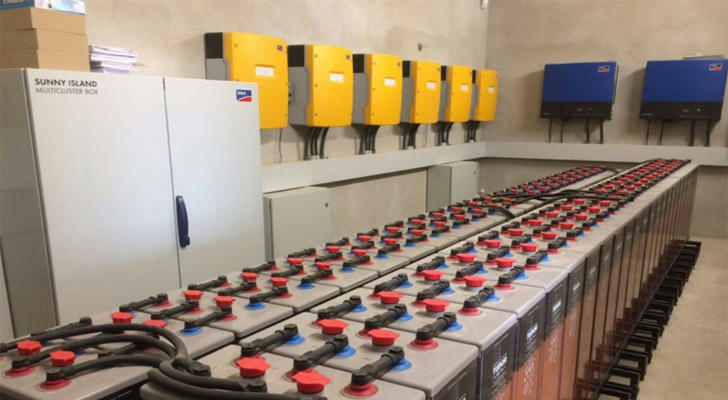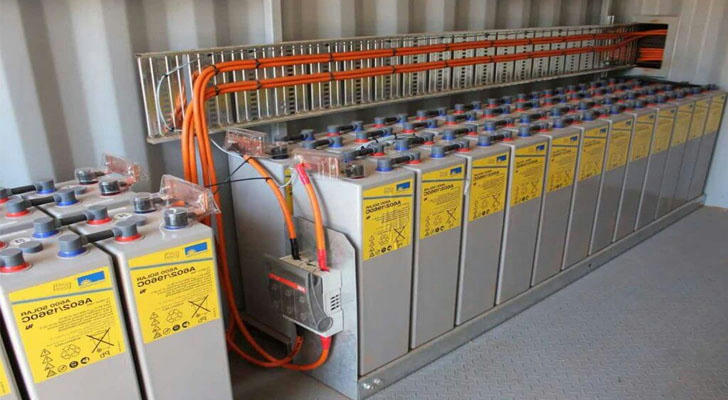How to Choose the Right Solar Battery for Your Needs
Choosing the right solar battery is key to ensuring the efficient and long-lasting operation of your solar power system. A solar battery not only stores energy but also determines the system’s ability to supply power when sunlight is unavailable. With various types of batteries on the market, how do you pick the one that best suits your needs? This guide will help you make an informed decision by discussing battery types, capacity, lifespan, efficiency, and cost.

1. Identify the Battery Type
The main types of solar batteries include lead-acid, lithium-ion, and nickel-metal hydride batteries. Each has its own advantages and drawbacks, and choosing the right one depends on your budget, system requirements, and environment.
• Lead-acid batteries: These are more affordable but larger in size with a shorter lifespan. They are suitable for those on a tight budget. Lead-acid batteries come in two types: sealed (maintenance-free) and open (requiring periodic water refills).
• Lithium-ion batteries: Known for their long life, high efficiency, and lighter weight, these batteries are ideal for users looking for long-term investment and high energy storage efficiency. While their initial cost is higher, their longevity and low maintenance make them a popular choice for homes and businesses.
• Nickel-metal hydride batteries: Though more eco-friendly, these are costlier and less common compared to lead-acid and lithium-ion batteries.
Recommended Choices:
• Limited budget and moderate needs: Lead-acid batteries offer good value.
• Long-term use and high efficiency: Lithium-ion batteries are the best option.
2. Evaluate Battery Capacity
Battery capacity determines how much energy it can store, typically measured in kilowatt-hours (kWh). The right capacity depends on your daily electricity usage and your solar system's energy production.
• If your system is primarily used during the day with minimal night use, a lower-capacity battery might be sufficient.
• If you need to prepare for extended periods without sunlight or power outages, a higher-capacity battery is recommended to ensure continuous energy supply.
Capacity Selection Guide:
• Small households or occasional backup power: Lower-capacity batteries are cost-effective.
• Large households or continuous backup power: Higher-capacity batteries ensure reliable energy throughout the day.

3. Consider Battery Lifespan and Cycle Count
A battery’s lifespan and cycle count are important factors to consider. Cycle count refers to the number of times a battery can be charged and discharged, with different battery types offering varying cycle life.
Lead-acid batteries have shorter cycle lives, ranging from 500 to 1,200 cycles, making them better for users with lower longevity needs. Lithium-ion batteries can offer between 2,000 and 5,000 cycles, lasting 10 to 15 years, making them ideal for long-term solar energy systems. Given that solar power systems are a long-term investment, opting for a battery with a higher cycle count can save you replacement costs down the road.
Lifespan Recommendations: Short-term use: Lead-acid batteries are suitable for those with limited longevity requirements. Long-term investment: Lithium-ion batteries are the best choice for sustainable energy.
4. Consider Charging Efficiency
Charging efficiency refers to how well a battery stores and releases energy, usually expressed as a percentage. Higher efficiency means less energy loss and greater system performance.
Lithium-ion batteries typically offer over 90% efficiency, maximizing solar energy usage and reducing waste.
Lead-acid batteries have a lower efficiency, around 70%-85%, meaning that less energy is stored compared to lithium-ion batteries for the same energy input.
If you want to optimize the overall efficiency of your system and make the most of your solar energy, choosing a high-efficiency battery is crucial.
Efficiency Recommendations:
• High-efficiency needs: Lithium-ion batteries maximize solar energy storage.
• Lower efficiency needs: Lead-acid batteries are more cost-effective but less efficient.
5. Cost and Budget Planning
Solar battery costs vary depending on type, capacity, and brand. Lead-acid batteries are generally more affordable, but their shorter lifespan and higher maintenance may lead to increased long-term costs. Lithium-ion batteries, though more expensive upfront, offer greater longevity and require less maintenance, making them more economical over time.
When planning your budget, consider not only the initial purchase price but also maintenance and replacement costs. For most households or businesses, investing in a high-quality, long-lasting battery can reduce overall expenses and increase system reliability.

Budget Suggestions:
Short-term, low-budget projects: Lead-acid batteries are a cost-effective choice. Long-term, energy-efficient projects: Lithium-ion batteries may have a higher upfront cost but lower long-term expenses.
Conclusion
Choosing the right solar battery involves evaluating various factors, including battery type, capacity, lifespan, charging efficiency, and cost. By carefully considering your energy needs and budget, you can ensure the efficient operation of your solar system, maximize solar energy usage, and achieve better economic returns in the long run.
